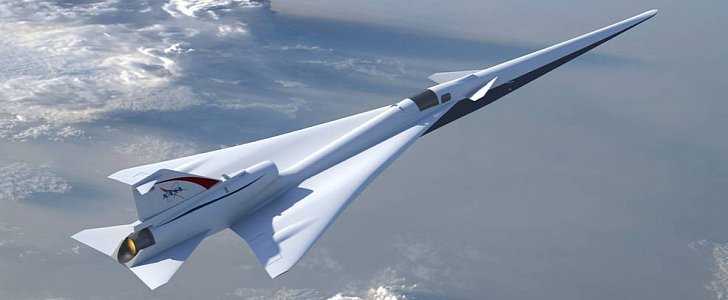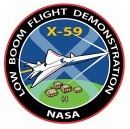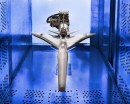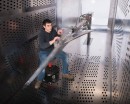The world’s leading space agency announced on Wednesday the signing of an agreement with the French Office National d'Etudes et de Recherches Aerospatiales (ONERA) that would help it speed up the revival of supersonic passenger flights.
NASA is currently well underway with the development of the Low Boom Flight Demonstration (LBFD) aircraft, a machine meant to test the technologies required to go Mach 1.4 above inhabited areas, without causing major disruptions.
ONERA will be in charge with determining where sonic booms will be heard as supersonic aircraft fly overhead In order to remove the effects of the loud noise.
“This partnership shows there is interest in supersonic travel all over the world,” said in a statement Jaiwon Shin, NASA’s associate administrator for aeronautics.
“Solving the issue of annoying sonic booms could ultimately cut travel time to worldwide destinations in half.”
The research into the hows and whys of the sonic boom caused by airplanes is required because currently supersonic flight overland is forbidden.
The LBFD is the precursor of the QueSST airplane - Quiet Supersonic Transport. When it is ready years from now, it will fly twice as fast as today’s commercial airliners and close to the maximum speed achieved by the Concorde, the world’s only supersonic passenger plane.
By designing the airplane differently, NASA plans to use separation of the shocks and expansions of airflow associated with supersonic flight to reduce the power of the sonic boom.
The design of the QueSST is, says Lockheed, “resembling the paper airplanes we let sail in our youth.” It features a long fuselage, a highly swept delta wing, and multiple control surfaces.
As per the initial data, this separation can reduce the sonic boom to as much as 60 dB, the volume you get in your average conversation with a friend. By comparison, the Concorde was rated at 90 dB.
ONERA will be in charge with determining where sonic booms will be heard as supersonic aircraft fly overhead In order to remove the effects of the loud noise.
“This partnership shows there is interest in supersonic travel all over the world,” said in a statement Jaiwon Shin, NASA’s associate administrator for aeronautics.
“Solving the issue of annoying sonic booms could ultimately cut travel time to worldwide destinations in half.”
The research into the hows and whys of the sonic boom caused by airplanes is required because currently supersonic flight overland is forbidden.
The LBFD is the precursor of the QueSST airplane - Quiet Supersonic Transport. When it is ready years from now, it will fly twice as fast as today’s commercial airliners and close to the maximum speed achieved by the Concorde, the world’s only supersonic passenger plane.
By designing the airplane differently, NASA plans to use separation of the shocks and expansions of airflow associated with supersonic flight to reduce the power of the sonic boom.
The design of the QueSST is, says Lockheed, “resembling the paper airplanes we let sail in our youth.” It features a long fuselage, a highly swept delta wing, and multiple control surfaces.
As per the initial data, this separation can reduce the sonic boom to as much as 60 dB, the volume you get in your average conversation with a friend. By comparison, the Concorde was rated at 90 dB.






